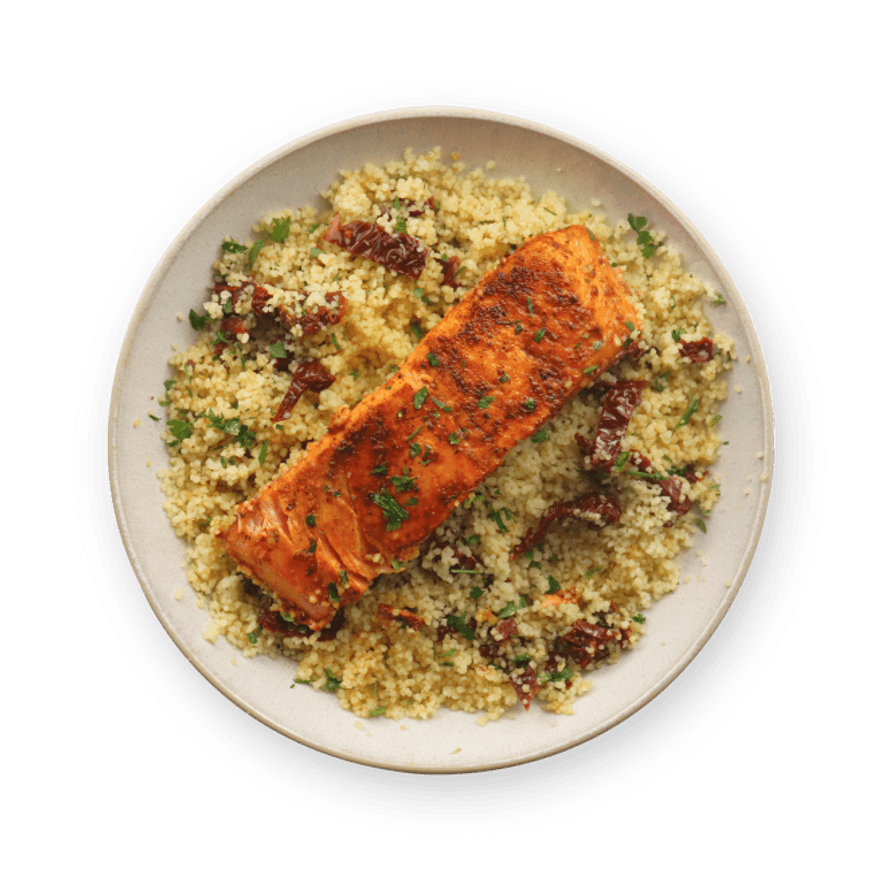Ingredients
Make sure you have...
Utensils
Stovetop, Frying pan, Kettle
recipe


Step 1
Coat the salmon with harissa and olive oil. Add salt & pepper and let it marinate.

Step 2
While the salmon is marinating, pour the semolina into a bowl and season it according to your taste.
Step 3
Cover the semolina with hot water (just until it is all submerged) and cover the bowl with plastic wrap. Leave for 5 minutes while it absorbs the water. (Note: if you can't find semolina, any kind of cous cous will work perfectly too!)


Step 4
Fluff up the semolina and add the chopped sun dried tomatoes and chopped parsley. Mix well to combine.

Step 5
In a frying pan on high heat, cook the salmon for 3 minutes on each side, or until cooked through.
Step 6
Serve the salmon with the semolina. Add some more chopped sun dried tomatoes and parsley on top if you like. Time to eat!
Personal notes
Add your own flavor!
Nutrition facts
Average estimated amount for one serving
| Energy | 531 cal. |
| Fat | 21 g |
| Carbohydrates | 49 g |
| Protein | 34 g |
| Fiber | 6 g |
Values are based on an average estimate for one serving. All nutrition information presented on Jow is intended for informational purposes only. If you have any concerns or questions about your health, please consult with a health-care professional.
On average, one serving of the recipe "Moroccan style salmon" contains 531 Energy, 21 g of Fat, 49 g of Carbohydrates, 34 g of Protein, 6 g of Fiber.
Price per portion
| € | Nos recettes à -2 € par portion |
| €€ | Nos recettes entre 2 € et 4 € par portion |
| €€€ | Nos recettes à +4 € par portion |
Please note, the price above is dependent on your grocer and the available products in the grocery store you chose.
Scores


A Nutri-score
The Nutri-score is an indicator intended for understanding nutritional information. Recipes or products are classified from A to E according to their food composition to promote (fiber, proteins, fruits, vegetables, legumes, etc.) and foods to limit (energy, saturated fatty acids, sugars, salt, etc.).
D Green-score
The Green-score is an indicator representing the environmental impact of food products. The recipes or products are classified from A+ to F. It takes into account several factors on the pollution of air, water, oceans, soil, as well as the impacts on the biosphere. These impacts are studied throughout the product life cycle.
Retrieving reviews...



